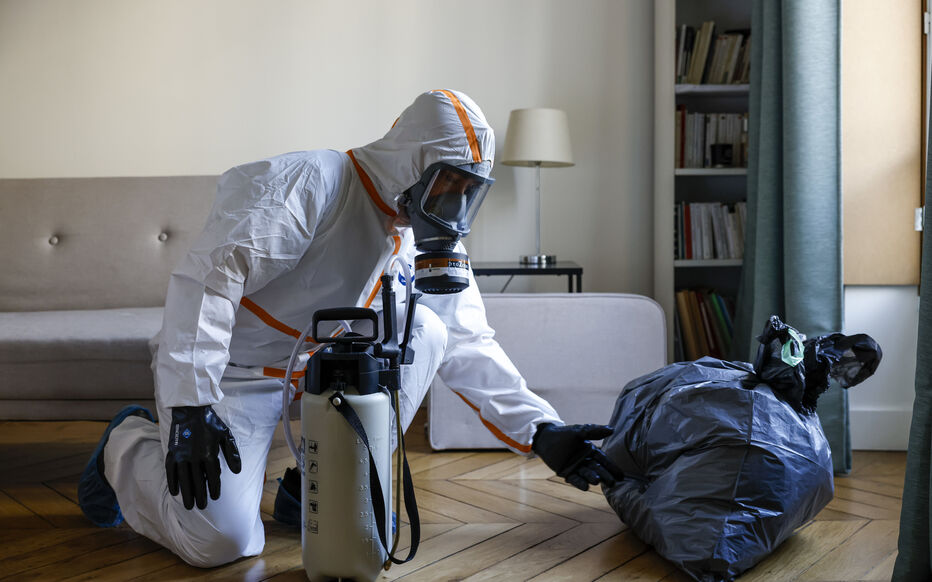In principle, bed bug bites are not dangerous to health. However, some people can develop allergic reactions ranging from swollen red spots and blisters to more serious symptoms. If this is the case for you, here are our practical tips for calming the inflammation and relieving the itching.
N.B.: This article is for information purposes only and is not a substitute for consulting a doctor.
What are the symptoms of a bed bug allergy?

An allergy occurs when the immune system overreacts to something it considers a threat, even if it is harmless to most people.
In the case of bed bugs, some people can develop hypersensitivity to the proteins in the insect’s saliva, released when it bites.
These allergic reactions to ‘bites’ can vary in intensity and take several forms.
Here are the most common symptoms of a bed bug bite allergy:
- Intense redness and itching: Allergy sufferers may experience localised redness of the skin and increased itching around the bitten area. The skin may be irritated and the itching, which can be very intense, may last for several days.
- Swelling and skin rashes: In addition to simple redness, there may be significant swelling around bedbug bites. Some people also develop hives, with red, swollen patches appearing on the skin.
- Blisters and more severe rashes: In some particularly sensitive people, bites can develop into small fluid-filled blisters. These blisters can be painful and require special attention to avoid infection.
- Generalised allergic reaction: Although rare, a more widespread allergic reaction may occur with symptoms such as itching all over the body, generalised hives, sneezing/coughing, headaches or more extensive skin rashes.
- Serious reactions: In very rare cases, a severe allergic reaction called anaphylactic shock may occur. In this case, breathing difficulties, swelling of the face or lips and a feeling of general malaise may occur. These symptoms require immediate medical attention, with an injection of adrenaline to counter the anaphylactic reaction.
In the event of a severe allergic reaction or if in doubt, it is advisable to consult a doctor or allergist as soon as possible for assessment and appropriate treatment.
You may also experience allergic symptoms linked to house dust mites, pollen, animal hair or certain foods.
➡️ See also: What should I do if my baby is bitten by bed bugs?

How long does an allergic reaction to bed bug bites last?
The majority of allergic reactions to bed bug bites and stings, such as redness, itching and swollen spots, generally last between 3 and 7 days. However, itching can persist for up to two weeks in some people.
In the case of more pronounced reactions, such as blistering or extensive hives, this can last up to 10 days or more.
➡️ See also: 10 questions to find out more about bed bugs
Is a bed bug allergy dangerous?
An allergy to bed bugs is generally benign, but it can be uncomfortable and cause intense itching and skin rashes. However, for some sensitive people, this allergy can become more problematic, even dangerous.
Here are the main risks:
- Severe skin reactions : hives, eczema or blisters.
- Skin infections: Scratching pimples/stings can lead to lesions that encourage the development of bacteria and the appearance of secondary infections, such as impetigo.
- Serious allergic reactions: In rare cases, an allergy to bed bug bites can cause a systemic allergic reaction, such as angioedema, which causes swelling of the face, lips and eyelids, and can even obstruct the airways.
- Anaphylactic shock: Even rarer, anaphylactic shock is an extreme and potentially fatal allergic reaction. Although bed bugs are rarely responsible for this reaction, it is important to consult a doctor if you experience worrying symptoms such as difficulty breathing, dizziness or severe swelling after a bite.

What should I do if I’m allergic to bed bugs?
Are you allergic to bed bugs? Here are some steps you can take to help calm your allergic reaction:
1. Clean the bitten area
- Gently wash the affected area of skin with warm water and mild soap to remove any saliva residue left by the bed bugs.
- Gently patdry with a clean towel, without rubbing, to avoid aggravating the irritation.
2. Apply a cold compress

- Place a cold compress or clean cloth soaked in cool water over the stung area for 10 to 15 minutes.
- The cold helps to reduce itching and calm inflammation.
3. Use antihistamine medication
- Antihistamines in tablet or cream form can help block the allergic reaction. Oral antihistamines, available from pharmacies, are effective in soothing itching and reducing swelling.
- Ask your pharmacist for advice or consult a doctor to find out which product is best for you.
4. Apply soothing creams
- Corticosteroid-based creams are often recommended to calm inflammation and reduce intense itching.
- You can also apply Serenid Soothing Roll-on.
5. Try natural remedies

- Aloe vera gel: Apply a thin layer of aloe vera gel to the bite to soothe itching and help pimples heal, thanks to its anti-inflammatory and moisturising properties.
- Lavender or tea tree essential oil: Dilute a few drops in a carrier oil (such as sweet almond oil) and apply this mixture to the bite to reduce inflammation and soothe the skin.
➡️ See also: Grandma’s remedies for bed bugs
6. Avoid scratching
While it’s tempting to scratch your bites and pimples, it can make the irritation worse and lead to infection. If you find it hard to resist, apply an itch-relieving cream or remedy to limit the urge to scratch.
7. Watch for symptoms
If the itching becomes intense or if you notice any signs of a severe reaction (severe swelling, breathing difficulties, generalised rash), consult a doctor without delay.
How to get rid of bed bugs?
First of all, it’s important to confirm the presence of bed bugs in your home, for example by dog detection.

The Serenid® product range
Sereni-d® is a Swiss brand that has developed unique, patented formulas against bed bugs. Our products are made from 100% concentrated natural ingredients and active plant substances for maximum effectiveness. Our entire range has been rigorously tested to European standards and regulations, and is registered with the French Ministry of the Environment.
Spray, diatomaceous earth, textile repellent, soothing roll, discover our range of products to put an end to bed bugs.
Implementing a precise protocol to combat bed bugs
Prior to chemical treatment, you’ll need to :
- Prepare infested rooms
- Wash linen and clothing at high temperature (60 degrees)
- Vacuum clean
- Heat cleaning
- etc.
➡️ To help you, here’s the complete bed bugs protocol.


Call in a specialist company
In the event of an advanced infestation, you need to call in a professional pest control company.
Professionals are trained to handle chemicals safely, avoiding the risks of poisoning or allergies.
By entrusting this task to experts, you can gain peace of mind and ensure that pests are eliminated over the long term.
Good to know: to avoid fraudulent intervention, here’s a map of approved professionals.

